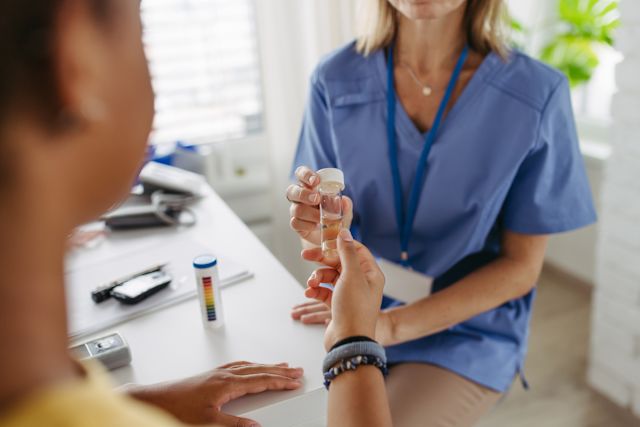Updated on October 24, 2024.
Ever gaze into the toilet bowl after peeing and wonder if the color staring back at you is healthy?
“A lot of people don’t realize that when you’re well-hydrated, your urine should be close to running water,” explains Arthur Crowley, MD, a urologist in New York City. That, or a pale, straw color or clear yellow tends to be considered healthy.
Urine gets its yellow color from a pigment called urochrome. “It has to do with the way the kidneys break things down,” says Dr. Crowley. In addition, healthy urine has a slight, mild smell.
But what if your pee has a strong odor or isn’t a mellow yellow? What if it’s pink? Or red? Or appears unusually foamy?
Chances are the cause is innocuous, but there are times when your body may be telling you something about an underlying medical condition.
Why does my pee stink?
Healthy urine odor should be unobtrusive. But there are several reasons why you might notice a stronger odor wafting up from the bowl. Dehydration can cast a distinct aroma if your urine isn’t as diluted as usual. This signals that you need to drink more water.
Vitamins—namely vitamin B6—and certain foods are other common causes of off-smelling pee.
“Vitamin B6 has a strong odor, almost like old urine,” says Crowley. “It’s more a nitrogen-type smell.”
Garlic can make your pee as stinky as your breath, and asparagus is well known for scenting your urine, giving off a sulfur-like smell.
Sometimes, though, the smell may be a sign of trouble. People with diabetes often have sweet-smelling urine due to the presence of sugar. A urinary tract infection (UTI) is another condition that brings along a strong smell, “almost like gunpowder,” says Crowley. “The bacteria that causes a UTI will split the urea molecules in urine apart, releasing the smell.”
Pay heed to unusual colors
Red or pink are generally not healthy urine colors because they could indicate the presence of blood. That said, don’t panic just yet.
Blueberries and rhubarb can do it. So can beets. Certain medications, such as senna laxatives or even ibuprofen can cause blood in the urine. Crowley says if a lab analysis reveals no red blood cells in your urine sample, it’s probably something you ate.
If it’s not your diet, blood in the urine may be a symptom of a UTI, bladder stones, and cancer of the kidneys or bladder. It may also be due to long-distance running (a condition known as joggers’ hematuria) or other strenuous exercise. If you haven’t recently eaten vegetables that may be behind the color change, see a healthcare provider (HCP) and have a sample taken.
Very dark urine may be a warning sign
Some people may be accustomed to urine that is a darker yellow, orange, or even brown. Severe dehydration is the best-case scenario for urine that’s amber or orange in color. Fortunately, it’s the most common diagnosis, according to Crowley.
The fix is easy enough: Drink more water. If you still notice dark urine, you might need to replenish your electrolytes as well. Sports drinks and Pedialyte can help.
But if dehydration isn’t causing the dark hue, it could be something more serious.
“Cirrhosis of the liver and hepatitis are possibilities,” says Crowley. With liver issues, a pigment called bilirubin is turning the urine dark. “Bilirubin results from the breakdown of old red blood cells and normally can be converted to a water-soluble substance by the liver,” Crowley says. If the liver is damaged, the bilirubin does not get broken down and passes through the bladder as a dark discoloration.
Some foam is ok, but too much may be an issue
Depending on factors like the speed and force of your flow, you may notice some foamy bubbles upon peeing. Large bubbles that appear in a single layer on the water but that pop and disappear quickly are considered normal.
But if your urine is often foamy, the foaminess is increasing with time, or you see multiple layers of small- to medium-sized bubbles of foam, see an HCP. Foamy pee may be a sign of a condition called proteinuria, which involves an excess of protein in your urine. This may indicate kidney disease. Your HCP will likely give you a urine test to check the protein levels.







